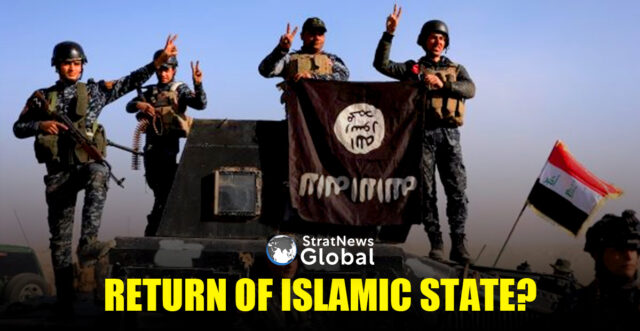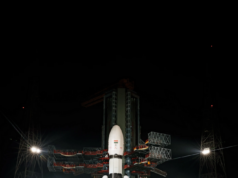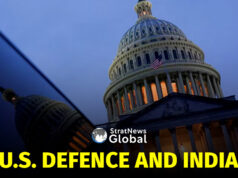Leaders in the Middle East and their Western allies have raised concerns that Islamic State may take advantage of the Assad regime’s collapse to reestablish its presence in Syria and neighbouring Iraq, where the group previously ruled over millions with brutal force.
Islamic State (IS) has been attempting just that, according to more than 20 sources, including security and political officials from Syria, Iraq, the U.S. and Europe, as well as diplomats in the region. The group has started reactivating fighters in both countries, identifying targets, distributing weapons and stepping up recruitment and propaganda efforts, the sources said.
So far, the results of these efforts appear limited. Security operatives in Syria and Iraq, who have been monitoring IS for years, said they foiled at least a dozen major plots this year.
A case in point came in December, the month Syria’s Bashar Assad was toppled.
IS Attack Plots
As rebels were advancing on Damascus, IS commanders holed up near Raqqa, former capital of their self-declared caliphate, dispatched two envoys to Iraq, five Iraqi counter-terrorism officials said. The envoys carried verbal instructions to the group’s followers to launch attacks. But they were captured at a checkpoint while travelling in northern Iraq on December 2, the officials said.
Eleven days later, Iraqi security forces, acting on information from the envoys, tracked a suspected IS suicide bomber to a crowded restaurant in the northern town of Daquq using his cell phone, they said. The forces shot the man dead before he could detonate an explosives belt, they said.
The foiled attack confirmed Iraq’s suspicions about the group, said Colonel Abdul Ameer al-Bayati, of the Iraqi Army’s 8th Division, which is deployed in the area. “Islamic State elements have begun to reactivate after years of lying low, emboldened by the chaos in Syria,” he said.
Still, the number of attacks claimed by IS has dropped since Assad’s fall.
IS claimed responsibility for 38 attacks in Syria in the first five months of 2025, putting it on track for a little over 90 claims this year, according to data from SITE Intelligence Group, which monitors terrorists’ activities online. That would be around a third of last year’s claims, the data shows.
In Iraq, where IS originated, the group claimed four attacks in the first five months of 2025, versus 61 total last year.
No Comments From Syria
Syria’s government, led by the country’s new Islamist leader, Ahmed al-Sharaa, did not answer questions about IS activities. Defence Minister Murhaf Abu Qasra said in January the country was developing its intelligence-gathering efforts, and its security services would address any threat.
A U.S. defence official and a spokesperson for Iraq’s prime minister said IS remnants in Syria and Iraq have been dramatically weakened, unable to control territory since a U.S.-led coalition and its local partners drove them from their last stronghold in 2019.
The Iraqi spokesperson, Sabah al-Numan, credited pre-emptive operations for keeping the group in check.
The coalition and partners hammered terrorist hideouts with airstrikes and raids after Assad’s fall. Such operations captured or killed “terrorist elements,” while preventing them from regrouping and carrying out operations, Numan said.
Iraq’s intelligence operations have also become more precise, through drones and other technology, he added.
At its peak between 2014 and 2017, IS held sway over roughly a third of Syria and Iraq, where it imposed its extreme interpretation of Islamic sharia law, gaining a reputation for shocking brutality.
Some local and European officials are concerned that foreign fighters might be travelling to Syria to join jihadi groups. For the first time in years, intelligence agencies tracked a small number of suspected foreign fighters coming from Europe to Syria in recent months, two European officials said, though they could not say whether IS or another group recruited them.
Exploiting Divisions
The IS push comes at a delicate time for Sharaa, as he attempts to unite a diverse country and bring former rebel groups under government control after 13 years of civil war.
U.S. President Donald Trump’s surprise decision last month to lift sanctions on Syria was widely seen as a win for the Syrian leader, who once led a branch of al Qaeda that battled IS for years. But some Islamist hardliners criticised Sharaa’s efforts to woo Western governments, expressing concern he might acquiesce to U.S. demands to expel foreign fighters and normalise relations with Israel.
Seizing on such divides, IS condemned the meeting with Trump in a recent issue of its online news publication, al-Naba, and called on foreign fighters in Syria to join its ranks.
At a May 14 meeting in Saudi Arabia, Trump asked Sharaa to help prevent an Islamic State resurgence as the U.S. begins a troop consolidation in Syria it says could cut its roughly 2,000-strong military presence by half this year.
Concerns Over U.S. Drawdown
The U.S. drawdown has heightened concern among allies that IS might find a way to free some 9,000 fighters and their family members, including foreign nationals, held at prisons and camps guarded by the U.S.-backed, Kurdish-led Syrian Democratic Forces (SDF). There have been at least two attempted jailbreaks since Assad’s fall, the SDF has said.
Trump and President Tayyip Erdogan of neighbouring Turkey want Sharaa’s government to assume responsibility for these facilities. Erdogan views the main Kurdish factions as a threat to his country. But some regional analysts question whether Damascus has the manpower needed.
Syrian authorities have also been grappling with attacks by suspected Assad loyalists, outbreaks of deadly sectarian violence, Israeli airstrikes and clashes between Turkish-backed groups and the SDF, which controls about a quarter of the country.
“The interim government is stretched thin from a security perspective. They just do not have the manpower to consolidate control in the entire country,” said Charles Lister, who heads the Syria program at the Middle East Institute, a U.S. think tank.
Responding to a request for comment, a State Department spokesperson said it is critical for countries to repatriate detained nationals from Syria and shoulder a greater share of the burden for the camps’ security and running costs.
U.S. To Prevent IS Resurgence?
The U.S. defence official said Washington remains committed to preventing an IS resurgence, and its vetted Syrian partners remain in the field. The U.S. will “vigilantly monitor” Sharaa’s government, which has been “saying and doing the right things” so far, the official added.
Three days after Trump’s meeting with Sharaa, Syria announced it had raided IS hideouts in the country’s second city, Aleppo, killing three terrorists, detaining four and seizing weapons and uniforms.
The U.S. has exchanged intelligence with Damascus in limited cases, another U.S. defence official and two Syrian officials said. The news agency could not determine whether it did so in the Aleppo raids.
The coalition is expected to wrap up operations in Iraq by September. But the second U.S. official said Baghdad privately expressed interest in slowing down the withdrawal of some 2,500 American troops from Iraq when it became apparent that Assad would fall. A source familiar with the matter confirmed the request.
The White House, Baghdad and Damascus did not respond to questions about Trump’s plans for U.S. troops in Iraq and Syria.
Reactivating Sleeper Cells
The United Nations estimates Islamic State, also known as ISIS or Daesh, has 1,500 to 3,000 fighters in the two countries. But its most active branches are in Africa, the SITE data shows.
The U.S. military believes the group’s secretive leader is Abdulqadir Mumin, who heads the Somalia branch, a senior defence official told reporters in April.
Still, SITE’s director, Rita Katz, cautioned against seeing the drop in IS attacks in Syria as a sign of weakness. “Far more likely that it has entered a restrategising phase,” she said.
Since Assad’s fall, IS has been activating sleeper cells, surveilling potential targets and distributing guns, silencers and explosives, three security sources and three Syrian political officials said.
It has also moved fighters from the Syrian desert, a focus of coalition airstrikes, to cities including Aleppo, Homs and Damascus, according to the security sources.
“Of the challenges we face, Daesh is at the top of the list,” Syrian Interior Minister Anas Khattab told state-owned Ekhbariya TV last week.
In Iraq, aerial surveillance and intelligence sources on the ground have picked up increased IS activity in the northern Hamrin Mountains, a longtime refuge, and along key roads, Ali al-Saidi, an advisor to Iraqi security forces, said.
Iraqi officials believe IS seized large stockpiles of weapons left behind by Assad’s forces and worry some could be smuggled into Iraq.
Foreign Minister Fuad Hussein said Baghdad was in contact with Damascus about Islamic State, which was growing and spreading into more areas.
“We hope that Syria, in the first place, will be stable, and Syria will not be a place for terrorists,” he said, “especially ISIS terrorists.”
(With inputs from Reuters)





